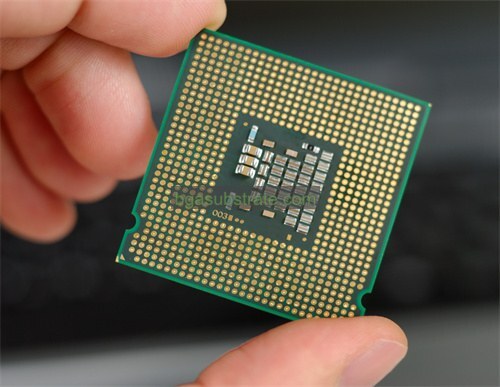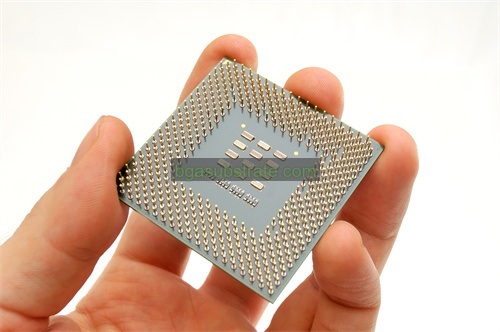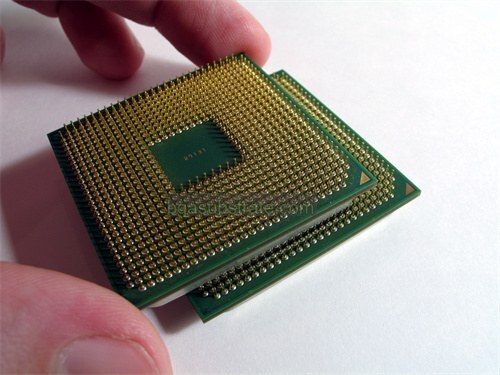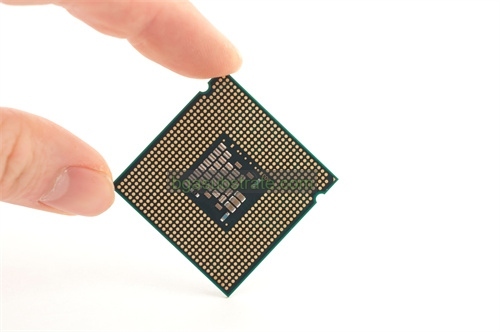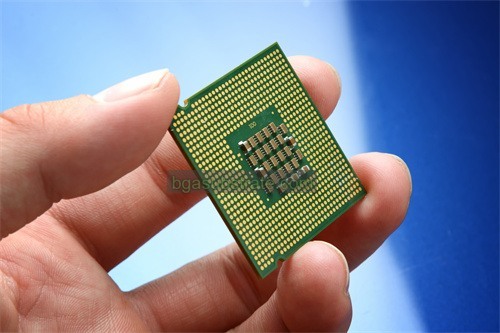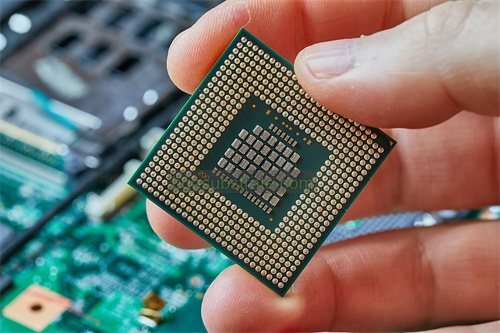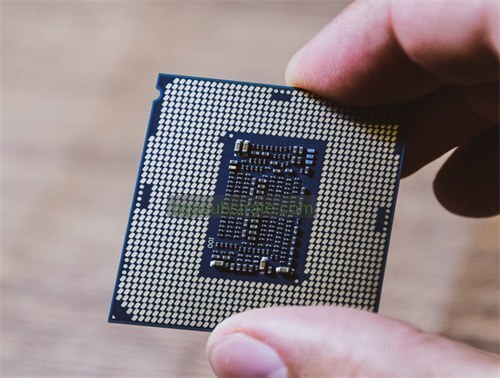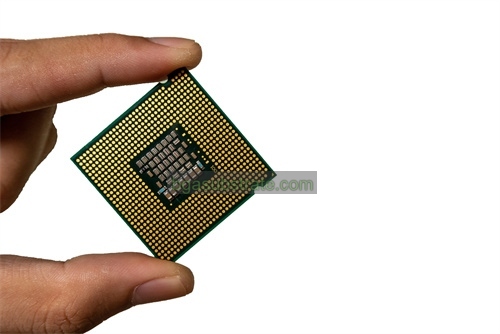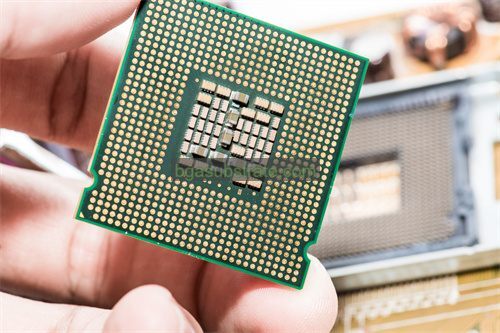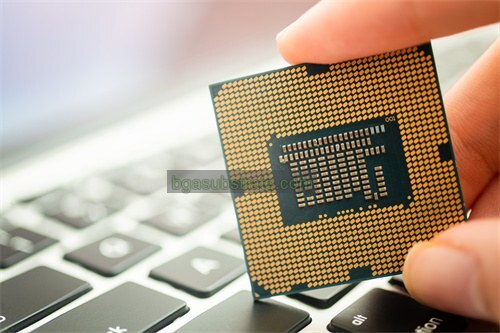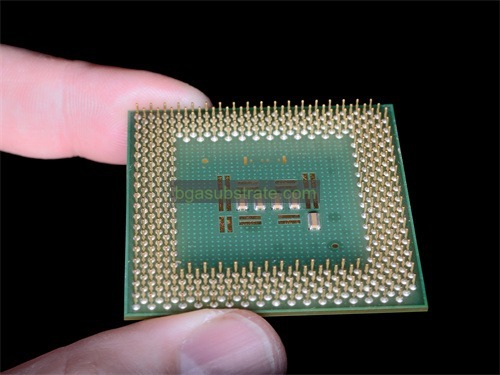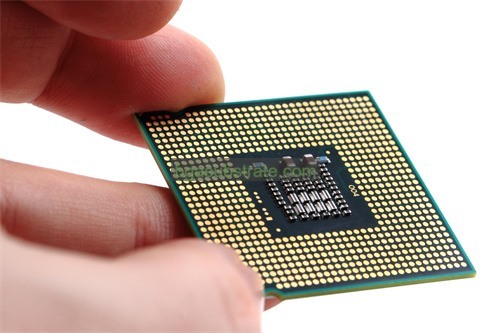Rogers RT/duroid® 6202 Substrat Fabricant
Rogers RT/duroid® 6202 Fabricant de substrat,Rogers RT/duroid® 6202 Substrate is a high-performance PTFE-based composite material renowned for its excellent electrical properties and mechanical stability. It features low loss tangent and precise dielectric constant, making it ideal for high-frequency and microwave applications. This substrate supports complex circuit designs and high-speed signal transmission, crucial for RF systems, Applications radar, and aerospace electronics. Rogers RT/duroid® 6202 Substrate is widely utilized in communication networks and satellite technologies, providing reliable performance and durability in demanding environments where signal integrity and thermal management are essential.
Quoi RT/duroid® 6202 Substrat?
RT/duroid® 6202 is a type of high-frequency laminate substrate manufactured by Rogers Corporation, renowned for its excellent electrical and mechanical properties suitable for RF and microwave circuit applications. This substrate features a PTFE (Polytétrafluoroéthylène) composite reinforced with woven fiberglass, which enhances its durability and dimensional stability, crucial for high-performance circuitry.
The key characteristics of RT/duroid® 6202 include low loss tangent (généralement autour de 0.0012), which ensures minimal signal loss and high signal integrity, making it ideal for applications demanding high frequency and high-speed data transmission. Its dielectric constant (εr) remains stable over a wide frequency range, providing consistent performance across various RF and microwave applications.
Manufactured using advanced processing techniques, RT/duroid® 6202 offers uniform electrical properties throughout the substrate, enabling precise impedance control and reliable performance in complex circuit designs. Its robust mechanical properties support ease of fabrication, tels que le forage, routage, and machining, which are essential for customizing circuit layouts to meet specific design requirements.
Les ingénieurs et les concepteurs choisissent souvent la RT/duroid® 6202 for applications like radar systems, communications par satellite, automotive radar sensors, and other wireless communication devices where reliability, consistency, and high-frequency performance are critical. Its reputation stems from Rogers Corporation’s commitment to quality and innovation, ensuring that RT/duroid® 6202 remains a preferred choice in the RF and microwave industry.
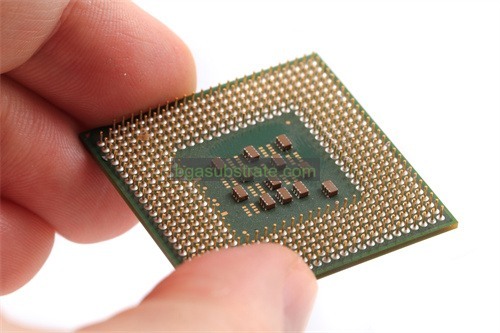
Rogers RT/duroid® 6202 Fabricant de substrat
Qu’est-ce que le Rogers RT/duroid® 6202 Substrat Directives de conception?
Directives de conception pour Rogers RT/duroid® 6202 substrat focus on maximizing the performance of high-frequency circuits while ensuring ease of manufacturing and reliability. Here are some key aspects typically covered in RT/duroid® 6202 design guidelines:
- Material Specifications: Understanding the specific electrical and mechanical properties of RT/duroid® 6202, such as its dielectric constant (εr), tangente de perte, conductivité thermique, and dimensional stability, is crucial. These properties dictate signal integrity, Gestion thermique, and overall performance in RF and microwave applications.
- Conception empilable: Establishing an appropriate layer stack-up that optimizes signal propagation, impedance matching, and thermal dissipation. This includes determining the number and order of copper and dielectric layers to achieve desired impedance levels and minimize signal loss.
- Transmission Line Design: Designing transmission lines (microstrip, stripline, coplanar waveguide) with precise dimensions and spacing to maintain consistent impedance and minimize reflections. RT/duroid® 6202’s low loss tangent helps in achieving high-frequency signal integrity across these transmission lines.
- Via Design: Guidelines for via placement, size, and density to ensure minimal impedance disruption and adequate thermal management. Proper via design is critical to maintaining signal integrity and electrical performance across multilayer PCBs using RT/duroid® 6202.
- Material Handling and Fabrication: Recommendations for handling RT/duroid® 6202 during manufacturing processes to prevent damage and ensure dimensional stability. Guidelines may include temperature and humidity controls, as well as proper techniques for cutting, forage, and laminating the substrate.
- Gestion thermique: Strategies for managing heat dissipation within the circuit design, considering RT/duroid® 6202’s thermal conductivity and its impact on component reliability and overall system performance.
- Assurance qualité: Ensuring adherence to Rogers Corporation’s quality standards throughout the manufacturing process to guarantee consistent material properties and performance characteristics of RT/duroid® 6202 Substrats.
En suivant ces directives de conception, engineers and designers can leverage the exceptional electrical and mechanical properties of RT/duroid® 6202 to develop high-performance RF and microwave circuits that meet stringent requirements for reliability, Intégrité du signal, et fabricabilité.
Les avantages de Rogers RT/duroid® 6202 Substrat
Rogers RT/duroid® 6202 substrat offers several advantages that make it a preferred choice for high-frequency RF and microwave applications:
- Faible perte diélectrique: RT/duroid® 6202 exhibits a low loss tangent (généralement autour de 0.0012), which ensures minimal signal loss and excellent signal integrity at high frequencies. This property is crucial for maintaining the efficiency and reliability of RF and microwave circuits.
- Stable Electrical Performance: The substrate provides stable electrical properties over a wide frequency range, ensuring consistent performance in demanding applications. This stability is essential for maintaining impedance control and minimizing variations in circuit performance.
- Haute résistance mécanique: RT/duroid® 6202 is reinforced with woven fiberglass, enhancing its mechanical strength and dimensional stability. This makes it suitable for applications requiring durability and reliability in harsh operating environments.
- Facilité de fabrication: The substrate is designed for ease of fabrication, including machining, forage, and forming processes. This facilitates efficient production of complex circuit designs while maintaining tight tolerances and high precision.
- Stabilité thermique: It exhibits good thermal conductivity and stability, aiding in effective heat dissipation from components within the circuit. This property contributes to improved reliability and longevity of electronic devices operating at high power levels.
- Broad Application Range: RT/duroid® 6202 is widely used in various industries such as aerospace, défense, télécommunication, et systèmes radar automobiles. Its versatility and performance make it suitable for applications requiring high-frequency performance and stringent reliability standards.
- Quality and Consistency: Manufactured by Rogers Corporation, RT/duroid® 6202 adheres to rigorous quality standards, ensuring consistent material properties and reliable performance batch after batch.
Total, Rogers RT/duroid® 6202 substrate’s combination of low dielectric loss, stable electrical performance, Robustesse mécanique, and ease of fabrication makes it a preferred choice for engineers and designers developing high-performance RF and microwave circuits where reliability and performance are critical.
Qu’est-ce que le Rogers RT/duroid® 6202 Substrat Processus de fabrication?
Le processus de fabrication du Rogers RT/duroid® 6202 substrate involves several key steps to ensure the material achieves its desired electrical and mechanical properties suitable for high-frequency RF and microwave applications:
- Preparation of Base Materials:RT/duroid® 6202 substrate starts with a base material composed of PTFE (Polytétrafluoroéthylène) reinforced with woven fiberglass. These materials are carefully selected and prepared to meet specific dielectric constant (εr), tangente de perte, and mechanical strength requirements.
- Laminage:The prepared base materials undergo lamination, where multiple layers of PTFE and fiberglass are bonded together under controlled temperature and pressure. This process ensures uniform distribution of the fiberglass reinforcement and PTFE resin, critical for achieving consistent electrical and mechanical properties across the substrate.
- Curing:Après le laminage, the substrate undergoes a curing process where it is exposed to elevated temperatures. Curing helps the resin matrix in the PTFE material to fully cross-link and bond with the fiberglass reinforcement, enhancing the substrate’s mechanical strength and dimensional stability.
- Surface Preparation:Once cured, the substrate surfaces are prepared for subsequent processing steps such as copper cladding. Surface preparation may involve cleaning to remove any contaminants and ensuring optimal adhesion properties for copper layers.
- Revêtement en cuivre:Copper foil layers are bonded to the surfaces of the RT/duroid® 6202 substrate using an adhesive or through a lamination process. The copper foils are typically etched to create circuit patterns and features according to the design specifications for RF and microwave circuits.
- Gravure:The copper layers undergo etching to remove unwanted copper and define the desired circuit traces, Tampons, and features. Precision etching is critical to maintaining accurate impedance control and signal integrity across the substrate.
- Drilling and Machining:Holes for vias and component mounting are drilled into the substrate using specialized equipment. Precision drilling ensures alignment and dimensional accuracy required for high-frequency circuits. Machining processes may also be employed to create complex shapes or features on the substrate.
- Finition de surface:After drilling and machining, the substrate’s surface may undergo surface finish treatments such as solder mask application and surface coating to protect copper traces and enhance solderability.
- Contrôle qualité:Tout au long du processus de fabrication, rigorous quality control measures are implemented to verify material properties, dimensional tolerances, and adherence to design specifications. Testing may include electrical testing for impedance matching and signal integrity, mechanical testing for strength and durability, and visual inspection for defects.
By following these fabrication steps with precision and adherence to Rogers Corporation’s standards, RT/duroid® 6202 substrates are manufactured to deliver reliable performance in high-frequency applications where low loss, stable electrical characteristics, and mechanical robustness are essential.
L’application de la céramique Rogers RT/duroid® 6202 Substrat
Rogers RT/duroid® 6202 substrat, despite its name suggesting a ceramic-like quality, is actually a high-frequency laminate material primarily composed of PTFE (Polytétrafluoroéthylène) reinforced with woven fiberglass. It is used extensively in RF (Radiofréquence) and microwave applications where stringent electrical performance and reliability are crucial. Here are some common applications of RT/duroid® 6202 substrat:
- Aérospatiale et défense: RT/duroid® 6202 is widely used in aerospace and defense applications for radar systems, Systèmes de communication, radar cross-section (RCS) measurement systems, and electronic warfare (EW) systems. Its low dielectric loss and stable electrical performance make it suitable for high-frequency applications in harsh environments.
- Télécommunication: In telecommunications, RT/duroid® 6202 is used in base station antennas, satellite communications systems, and high-speed data transmission equipment. Its ability to maintain signal integrity at high frequencies supports reliable communication networks.
- Radar automobile: RT/duroid® 6202 is employed in automotive radar systems for collision detection, Régulateur de vitesse adaptatif, and autonomous driving technologies. Its low loss tangent ensures accurate signal propagation and detection in radar sensors.
- Dispositifs médicaux: It finds application in medical devices such as MRI machines and diagnostic equipment where high-frequency signals and precision are required for medical imaging and diagnostics.
- Équipement de test et de mesure: RT/duroid® 6202 substrates are used in test and measurement equipment, including network analyzers and spectrum analyzers, where precise signal analysis and measurement are essential.
- Applications industrielles: Industrial applications include radar sensors for industrial automation, wireless sensors, and high-frequency electronics used in manufacturing and process control systems.
- Électronique grand public:Although less common, RT/duroid® 6202 may also be used in consumer electronics where high-frequency performance is required, such as in high-speed data transfer applications or specialized antennas.
Total, RT/duroid® 6202 combinaison de substrat de faibles pertes, propriétés électriques stables, and mechanical durability makes it an ideal choice for applications demanding high-frequency performance, fiabilité, and consistency across various industries. Its use extends to any application where maintaining signal integrity and performance under challenging conditions is paramount.
FAQ sur Rogers RT/duroid® 6202 Substrat
Qu’est-ce que la RT/duroid® 6202 substrat en?
RT/duroid® 6202 substrate is primarily composed of PTFE (Polytétrafluoroéthylène) reinforced with woven fiberglass. This composition provides it with low dielectric loss, propriétés électriques stables, and mechanical strength suitable for high-frequency RF and microwave applications.
Quelles sont les principales propriétés électriques de la RT/duroid® 6202 substrat?
RT/duroid® 6202 substrate typically has a low loss tangent (around 0.0012), which ensures minimal signal loss and excellent signal integrity at high frequencies. It also exhibits a stable dielectric constant (εr) sur une large gamme de fréquences, critical for maintaining consistent impedance and performance in RF circuits.
What are the typical applications of RT/duroid® 6202 substrat?
RT/duroid® 6202 substrate is used in a variety of applications including aerospace and defense (systèmes radar, Systèmes de communication), Radar automobile (collision detection, Régulateur de vitesse adaptatif), télécommunication (base station antennas, Communication par satellite), Dispositifs médicaux (MRI machines, Équipement de diagnostic), et applications industrielles (radar sensors, Équipement de test et de mesure).
Comment le RT/duroid® 6202 substrate compare to other materials for RF applications?
Compared to other materials, RT/duroid® 6202 offers superior electrical performance with low loss tangent and stable dielectric constant, making it suitable for high-frequency applications where signal integrity and reliability are critical. Its mechanical strength and dimensional stability also contribute to its popularity in demanding environments.
What fabrication processes are involved in manufacturing RT/duroid® 6202 substrat?
The fabrication process includes preparing base materials, lamination to bond PTFE and fiberglass layers, curing to enhance mechanical properties, surface preparation for copper cladding, copper etching to define circuit patterns, drilling and machining for vias and component mounting, and quality control measures to ensure material and dimensional consistency.
Where can I buy RT/duroid® 6202 substrat?
RT/duroid® 6202 substrate is available through authorized distributors of Rogers Corporation. It’s important to purchase from reputable suppliers to ensure product quality and consistency.
Quels sont les avantages de l’utilisation de la RT/duroid® 6202 substrat?
The advantages include low dielectric loss, stable electrical properties over a wide frequency range, haute résistance mécanique, ease of fabrication, and suitability for diverse high-frequency applications in aerospace, défense, télécommunication, automobile, medical, and industrial sectors.
 Le nom de votre site Web
Le nom de votre site Web


